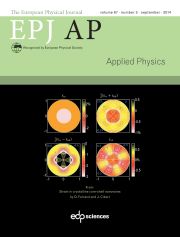Article contents
Flux observer for induction machine control. Part I - Sensitivity analysis as a function of sampling rate and parameters variations
Published online by Cambridge University Press: 15 April 2001
Abstract
In the last decades, many vector control techniques have been developed for induction machine toincrease their dynamic performances. But they are based on an accurate estimation of flux variables, whichare not measurable in conventional induction machines. So, observer strategies are used in inductionmachine controls. Complex algorithms have been developed, but their long calculation time does not allowa simple implementation in digital form. For this reason, reduced-order observers are often used when areal-time estimation is implemented. If these structures lead to better flux estimations than in the caseof an open-loop model, their convergence gains have to be determined and they are sensitive to theparameters value. The authors present a new analytical method to elaborate a reduced-order observer. Theinfluence of the sampling rate is taken into account and the paper investigates the optimal gain, whichminimise the sensitivity to the parameters value. In order to measure the observer robustness, theauthors define two criteria, which are computed in steady state: the orientation error and the moduluserror of the rotor flux. Some examples illustrate the theory and their calculation results are presented.
Information
- Type
- Research Article
- Information
- Copyright
- © EDP Sciences, 2001
References
- 3
- Cited by

